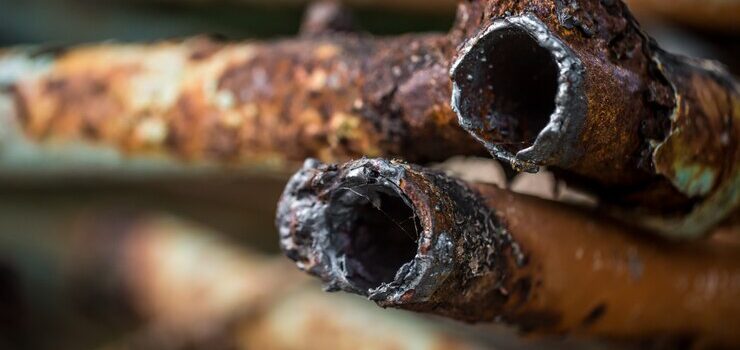Pipes are the unsung heroes of our modern infrastructure, silently carrying water, gas, and other essential utilities to our homes and businesses. However, despite their vital role, pipes are not immune to the ravages of corrosion. Over time, corrosion can eat away at pipes, leading to leaks, bursts, and costly repairs. In this blog post, we’ll delve into the root causes of pipe corrosion, exploring the various factors that contribute to this pervasive problem.
Understanding Pipe Corrosion:
Corrosion is a natural process that occurs when metals react with their environment, gradually deteriorating over time. In the case of pipes, corrosion typically manifests as rust, a reddish-brown coating that forms on the surface of metal surfaces. While rust may seem harmless at first glance, it can weaken pipes and compromise their structural integrity, eventually leading to failure.
Causes of Pipe Corrosion:
Chemical Reactions:
One of the primary causes of pipe corrosion is chemical reactions between the metal of the pipe and its surrounding environment. For example, in water distribution systems, the presence of dissolved oxygen, chlorides, and other corrosive chemicals can accelerate the corrosion process. Similarly, in industrial settings, exposure to acids, alkalis, and other harsh chemicals can corrode pipes from the inside out.
Electrochemical Processes:
Another common cause of pipe corrosion is electrochemical processes, such as galvanic corrosion and electrolysis. Galvanic corrosion occurs when two dissimilar metals are in contact with each other in the presence of an electrolyte, such as water. In this scenario, one metal acts as an anode, sacrificing itself to protect the more noble metal, which serves as the cathode. Electrolysis, on the other hand, occurs when an electric current passes through a conductive medium, causing metal ions to dissolve from the surface of the pipe.
Soil Conditions:
The soil in which pipes are buried can also influence their susceptibility to corrosion. Soils with high moisture content, low pH levels, and high concentrations of corrosive substances can accelerate the corrosion process. Additionally, the presence of bacteria, such as sulfate-reducing bacteria (SRB), can produce hydrogen sulfide gas, which reacts with metal surfaces to form corrosive compounds.
Mechanical Stress:
In addition to chemical and electrochemical factors, mechanical stress can also contribute to pipe corrosion. When pipes are subjected to excessive pressure, vibration, or movement, it can cause localized damage to the protective coatings on their surfaces, making them more susceptible to corrosion. Similarly, the presence of sharp bends, cracks, or weld defects can create areas of high-stress concentration where corrosion is more likely to occur.
Preventing Pipe Corrosion:
While pipe corrosion is a persistent problem, it is not inevitable. By implementing proactive maintenance strategies and adopting corrosion-resistant materials and coatings, it is possible to mitigate the effects of corrosion and extend the lifespan of pipes. Some common corrosion prevention techniques include:
Cathodic Protection:
Cathodic protection is a technique used to control corrosion by imposing a negative electrical charge on the metal surface of the pipe, thereby making it the cathode in an electrochemical cell. This can be achieved through the use of sacrificial anodes, which are more reactive than the metal of the pipe and thus corrode preferentially, or impressed current systems, which use an external power source to generate a protective electrical current.
Protective Coatings:
Applying protective coatings, such as epoxy, polyethylene, or zinc, to the surface of pipes can provide an additional layer of defense against corrosion. These coatings act as a barrier, preventing corrosive substances from coming into contact with the metal surface and inhibiting the formation of rust.
Corrosion Inhibitors:
Corrosion inhibitors are chemical compounds that can be added to the water or other fluids flowing through pipes to mitigate corrosion. These inhibitors work by forming a protective film on the surface of the metal, preventing corrosive reactions from occurring.
In Conclusion
In the realm of sewer line repair in Salt Lake City, dealing with pipe corrosion is an intricate challenge with potentially significant ramifications if neglected. However, by grasping the underlying causes of corrosion and adopting suitable preventive measures, we can diminish the likelihood of pipe failure and uphold the ongoing dependability of our infrastructure.
Factors such as chemical reactions, soil conditions, and mechanical strain all contribute to the corrosion process, underscoring the necessity for a thorough strategy in corrosion management. Through sustained vigilance and proactive measures, we can shield our pipes from rust and avert potential breakdowns.

















